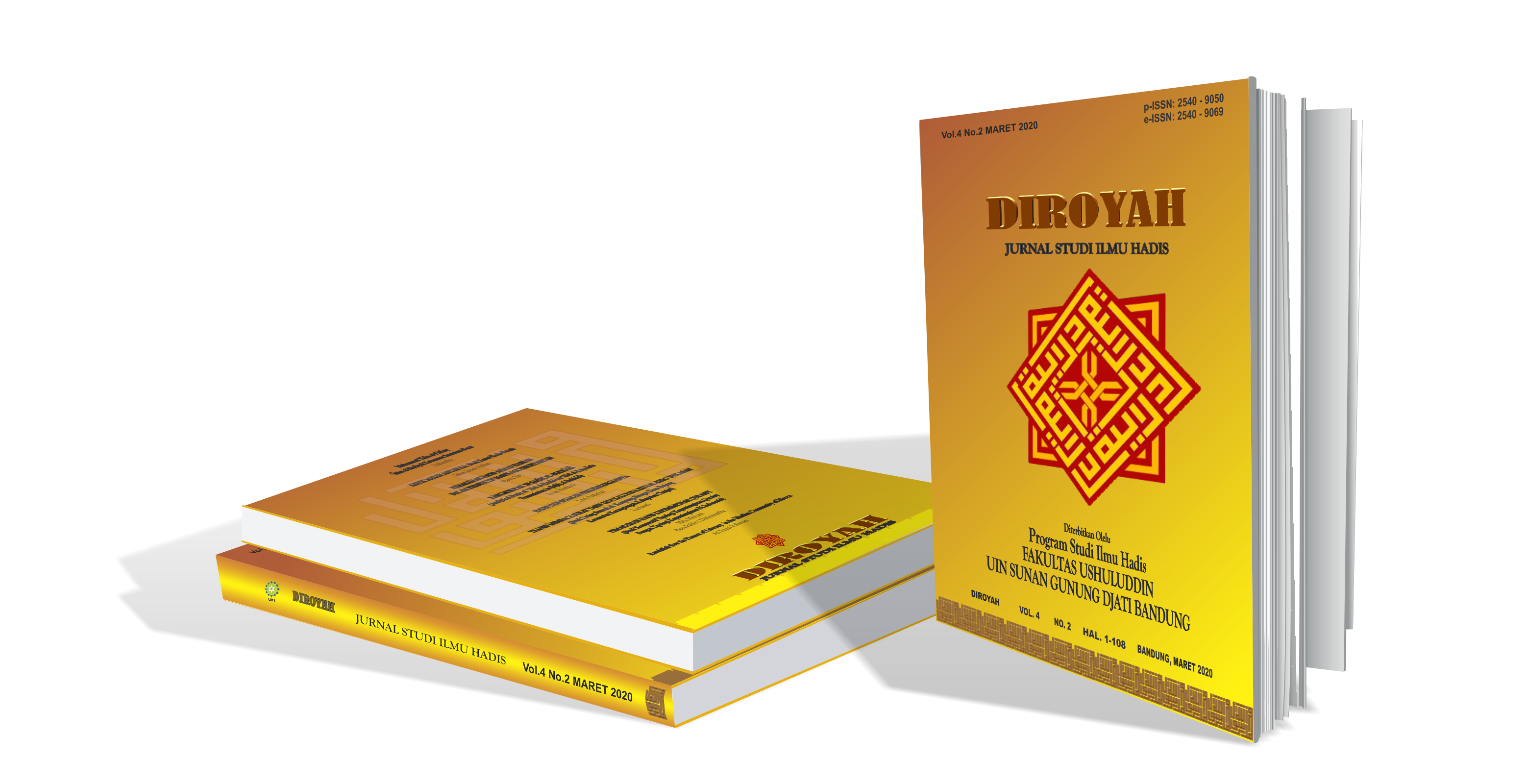Exploring The Relationship Between Sufism and Hadith: A Qualitative Analysis of Key Narrations and Interpretations
Main Article Content
Abstract
This study examines how Sufi scholars have utilized Hadith to develop a framework for their spiritual practices, including pursuing inner knowledge and cultivating spiritual states. Additionally, it aims to analyze key Hadith narrations central to the development of Sufi thought, such as those concerning the nature of God, the role of Prophet Muhammad, and the path to spiritual enlightenment. This study utilizes a qualitative research approach to comprehensively analyze key Hadith narrations in Sufi literature and explore the relationship between Sufism and Hadith. The methodology involves a thorough literature review of primary and secondary sources, including Hadith collections and commentaries, works of Sufi scholars, and relevant academic studies. Qualitative data analysis techniques, such as content analysis and thematic coding, are employed to identify key themes and patterns in the Hadith narrations and Sufi interpretations. The study demonstrates that the teachings of Sufism are rooted in the prophetic tradition and can be referenced in various Hadiths of the Prophet that discuss the practice of Sufism. The Hadiths emphasize the importance of worshipping God to the best of one’s ability (ihsan), purifying oneself from things that can defile the heart and hinder the light of God (tazkiyat al-nafs), and practicing zuhud or detachment from excessive love for the material world. Sufis strive to find the basis of these Sufi teachings through esoteric interpretation of these Hadiths. This effort is not only essential for integrating Hadiths and Sufi teachings but also for seeking the Prophet’s most profound insights and teachings
Article Details
Authors who publish with this journal agree to the following terms:
- Authors retain copyright and grant the journal right of first publication with the work simultaneously licensed under a Creative Commons Attribution-NonCommercial-ShareAlike 4.0 International License that allows others to share the work with an acknowledgment of the work's authorship and initial publication in this journal.
- Authors are able to enter into separate, additional contractual arrangements for the non-exclusive distribution of the journal's published version of the work (e.g., post it to an institutional repository or publish it in a book), with an acknowledgment of its initial publication in this journal.
- Authors are permitted and encouraged to post their work online (e.g., in institutional repositories or on their website) prior to and during the submission process, as it can lead to productive exchanges, as well as earlier and greater citation of published work (See The Effect of Open Access).
References
Ahmed, S. (2016). What is Islam? The Importance of Being Islamic. Princeton: Princeton University Press.
Al-DÄ«nawarÄ«, A. M. Q. (1999). Ta’wÄ«l Mukhtalif Al-Ḥadīṡ. Beirut: Al-Maktab Al-IslÄmÄ«.
Algar, H. (1989). Sufism: An Account of the Mystics of Islam. New York: Routledge.
Al-GhurÄb, M. M. (1989). Raḥmah Min Al-RaḥmÄn fÄ« TafsÄ«r Wa IsyÄrÄt Al-Qur’Än Min KalÄm Al-Syaikh Al-Akbar MuḥyÄ« al-DÄ«n Ibn Al-’ArabÄ«. Maá¹ba’ah Naá¸r.
Al-HarawÄ«, A. S. (1984). GharÄ«b Al-Ḥadīṡ, ed. Ḥusain Muḥammad Muḥammad Syaraf. Kairo: Al-Hai’ah Al-’Āmmah li Syu’ūn Al-Maá¹abi’ Al-AmÄ«riyya.
Al-ḤasanÄ«, A. M. A. (1984). Al-FutūḥÄt al-QuddÅ«siyyah fÄ« Syarḥal-Muqaddimah al-Ä€jurÅ«miyyah. Riyadh: Riyadh University.
Al-ḤasanÄ«, A. M. A. (1998). Al-Baḥr Al-MadÄ«d fÄ« TafsÄ«r Al-Qur’Än Al-MajÄ«d, ed. A. ‘Abd AllÄh al-QurasyÄ« RuslÄn. Cairo: Ḥasan ‘AbbÄs ZakÄ«.
Al-KÅ«hinÄ«, A. A. (n.d.). KhulÄá¹£ah Syarḥ Ibn ‘AjÄ«bah ‘alÄ Matn Al-Ä€jurÅ«miyyah FÄ« Al-Taá¹£awwuf. Cairo: DÄr al-ṬibÄ’ah al-’Āmirah.
Al-Maghribī, A. A. B. M. A. (1984). Naḥw Al-Qalb Syarḥal-Ājurūmiyyah. Riyadh: King Saud University.
Al-QarÄfÄ«, A. I. (n.d.). AnwÄr Al-BurÅ«q Fi AnwÄ’ Al-FurÅ«q.
Al-Saraqusá¹Ä«, A. S. (2001). KitÄb Al-DalÄ’il fÄ« GharÄ«b Al-Ḥadīṡ, ed. Muḥammad bin ‘Abd AllÄh al-QannÄs. Riyadh: Al-’UbaikÄn.
Al-SulamÄ«, A. A. H. S. (2001). TafsÄ«r GharÄ«b Al-Muwaá¹á¹a’ Malik, ed. ‘Abd Al-RaḥmÄn bin SulaimÄn Al-’UṡaimÄ«n. Riyadh: Maktabah Al-’AbÄ«kÄn.
Al-SyÄfi’ī, M. I. (1990). IkhtilÄf Al-Ḥadīṡ. Beirut: DÄr Al-Ma’rifah.
Al-Tirmiżī, M. A. A. (1969). Taḥṣīl NaẓÄ’ir Al-Qur’Än, ed. ḤusnÄ« Naá¹£r ZaidÄn.
Al-ZamakhsyarÄ«, M. A. (n.d.). Al-FÄ’iq fÄ« GharÄ«b Al-Ḥadīṡ, ed. ‘AlÄ« Muḥammad Al-BajÄwÄ« and Muḥammad AbÅ« Al-Faá¸l IbrÄhÄ«m. Lebanon: DÄr Al-Ma’rifah.
Ansari, M. A. H. (1992). The Mysteries of Fasting: A Hadith Commentary. Lahore: Islamic Book Service.
Banani, A. (2006). Islamic sufism and the doctrine of the unity of being. Journal of the American Oriental Society, 126(4), 553-562.
Chittick, W. C. (2014). Sufism: A Beginner’s Guide. New York: Oneworld Publications.
Ernst, C. (1997). The Shambhala Guide to Sufism. Boston: Shambhala.
Ernst, C. (2010). Sufism: An Introduction to the Mystical Tradition of Islam. Boston: Shambhala Publications.
Hussain, F. (2014). Asceticism and mysticism: An analysis of Sufi literature. International Journal of Humanities and Social Science Research, 3(1), 53-58.
Ibn Al-Arabi, M. (2002). Futuhat Al-Makkiyah. Translated by Aisha Bewley. Oxford: Anqa Publishing.
Izutsu, T. (1983). Sufism and Taoism: A Comparative Study of Key Philosophical Concepts. Berkeley: University of California Press.
Keeler, A. (2006). Sufi Hermeneutics: The Qur’an Commentary of Rashid al-Din Maybudi. Berkeley: University of California Press.
Nasr, S. H. (2011). Islamic spirituality: Foundations. New York: Routledge.
Rizvi, S. A. H. (2010). Sufism in Islam: Its concept and role in Islamic culture and civilization. Islam and Muslim Societies: A Social Science Journal, 3(1), 25-40.
Schimmel, A. (1975). Mystical Dimensions of Islam. Chapel Hill: University of North Carolina Press.

